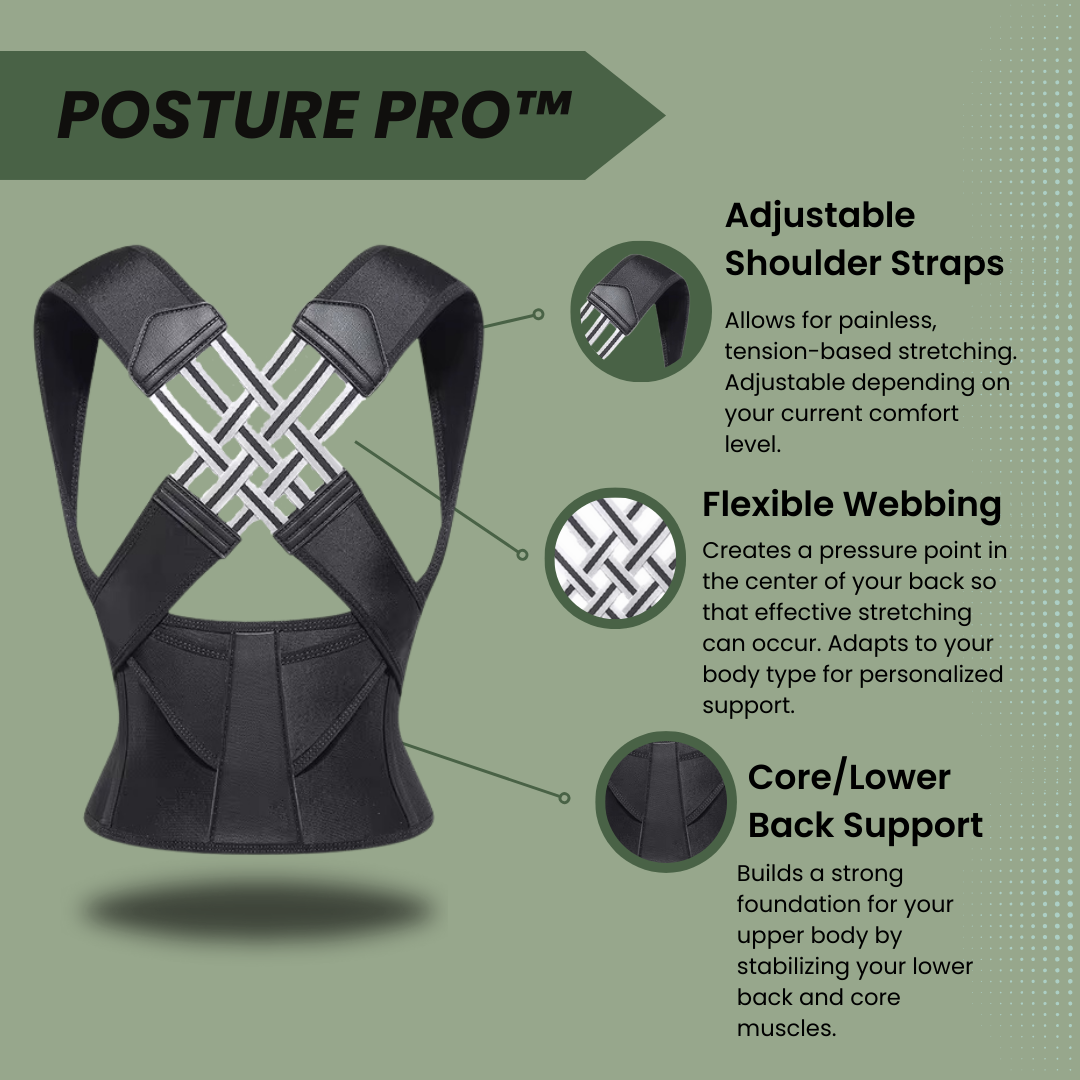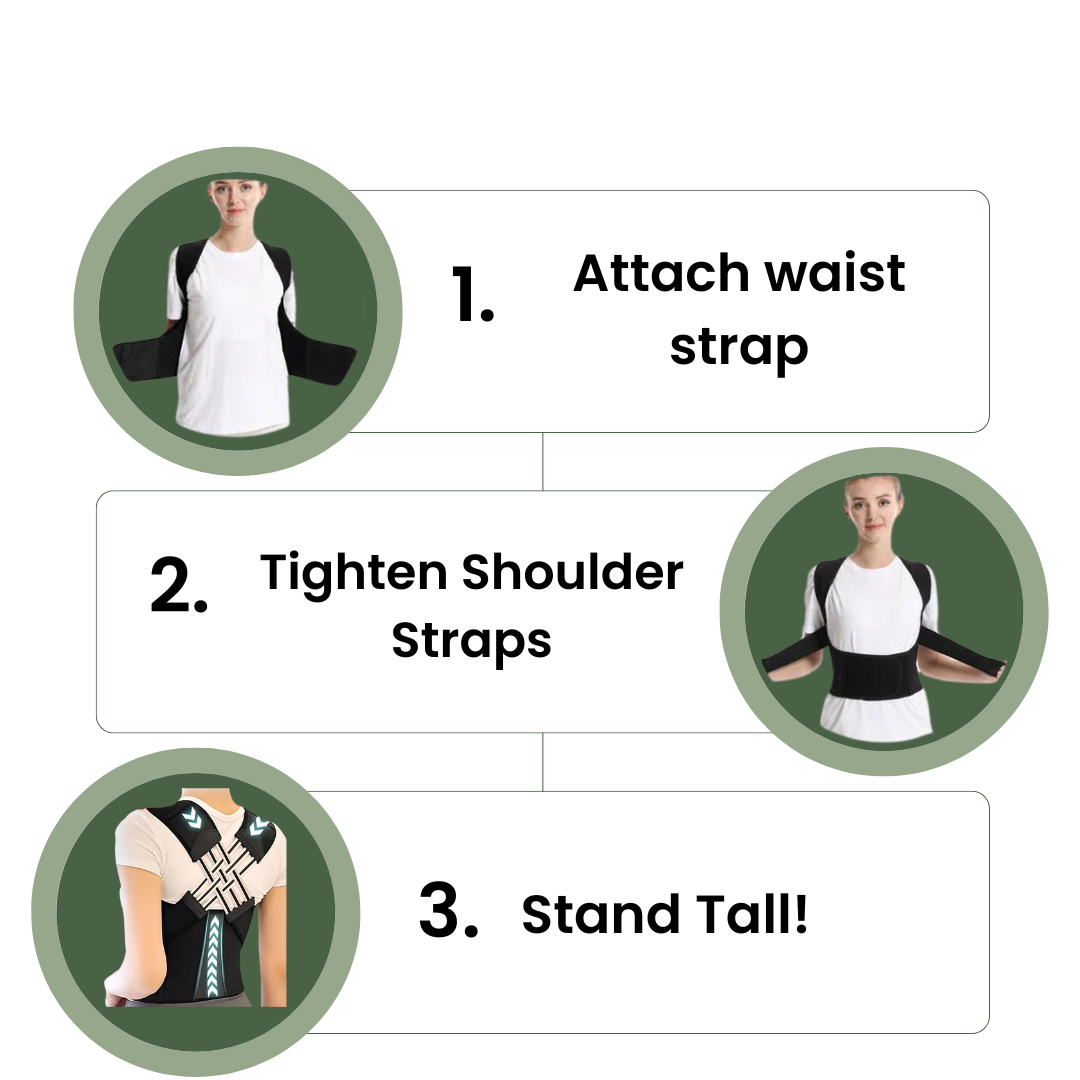Many people spend long hours at work sitting down, which can affect their output. Poor posture and prolonged sitting decrease optimal neurological function. This blog will explore how "Posture and Productivity at Work" plays a crucial role in enhancing workplace efficiency and employee health. Stay tuned for tips and insights that could change your workday!
Key Takeaways
- Poor posture and sitting too long decrease neurological function, impacting workplace efficiency. Research found a 6.5% increase in productivity when employees stand instead of sit.
- Good ergonomics and standing desks can improve spine health and overall well-being, leading to better focus, energy levels, and confidence at work.
- Regular breaks, core strength exercises, and ergonomic furniture help maintain good posture. These measures boost cognitive performance by about 6.5% compared to sitting down tasks.
- Implementing simple changes like adjusting chair height, keeping the monitor at eye level, and using lumbar support chairs promotes proper spine alignment and reduces back pain.
- Teaching young people about ergonomics supports healthy posture habits early on. This improves their focus and energy for schoolwork today and contributes to better workplace productivity in the future.
Importance of workplace productivity
Workplace productivity is vital for any business's success. Studies show that poor posture and prolonged sitting can hurt neurological function, which impacts an employee's efficiency.
For instance, research has found a 6.5% increase in productivity when workers stand rather than sit. This shows how significant changes in work posture and office ergonomics can boost worker efficiency.
Good posture not only affects physical health but also enhances mental wellbeing, leading to improved performance management.
Implementing strategies for better sitting posture and workplace ergonomics could prevent spine health issues caused by inadequate working conditions. With participants showing increased productivity through improved postures, it emphasizes the need for ergonomic solutions in work environments to support employee wellbeing and workplace efficiency actively.
These findings underscore the importance of understanding the direct relationship between posture and productivity for optimizing occupational health and overall company output.
Impact of posture on productivity
Posture significantly impacts productivity in the workplace. Poor posture and prolonged sitting hinder optimal neurological function, which can lead to a decrease in productivity. Research shows that office workers are about 6.5% more productive when they work while standing compared to sitting.
Changes in posture can provide an immediate boost to employee productivity.
Good posture helps enhance focus and energy levels. It also improves confidence and physical comfort for workers throughout the day. By understanding how posture affects work output, employees can take steps to enhance their overall efficiency and well-being.
Correcting your posture not only supports spinal health but also enhances your ability to perform at your best.
The Connection Between Posture and Productivity

Good posture significantly boosts productivity in the workplace. Research shows that maintaining an upright position enhances focus and energy levels. Proper alignment also supports physical comfort, reducing fatigue throughout the day.
Many factors play a role in how posture affects one’s performance at work. Understanding these connections can lead to improved outcomes. Explore more to discover how your posture influences your work life!
Exploring the research on posture and productivity
Research shows a strong link between posture and productivity. Poor posture leads to decreased neurological function, especially with prolonged sitting. Studies reveal that changing posture can immediately boost productivity levels.
Office workers become about 6.5% more productive when they switch from sitting to standing while working.
Good workplace ergonomics plays a vital role in maintaining spine health and overall well-being. These factors directly influence work output and efficiency. Bad posture not only causes physical issues like back pain but also mental challenges such as reduced focus and confidence.
Understanding how posture affects workplace productivity can help create healthier office environments for employees.
Factors that can affect productivity, such as breaks and core strength
Breaks play a vital role in maintaining workplace productivity. Taking micro breaks helps refresh the mind and body, which can boost focus. Studies show that workers experience a 6.5% increase in productivity when they shift to standing while working.
Core strength also impacts posture and overall output. Strong core muscles support the spine, promoting good posture at work. Poor core strength leads to slouching, which results in physical discomfort and reduced efficiency.
Enhancing both breaks and core strength can significantly improve office worker productivity while fostering better health outcomes in the workspace design.
Negative Effects of Poor Posture
Poor posture can lead to back pain and reduced lung capacity. Physical discomfort often decreases focus and confidence at work. These issues create barriers to productivity. Curious about how posture impacts your work life? Read on for more insights!
Physical effects like back pain and reduced lung capacity
Bad posture can cause serious physical effects. Many workers experience back pain due to slouching or sitting for long periods. This discomfort often leads to decreased productivity at work.
Reduced lung capacity also results from poor posture. Slumped positions restrict the diaphragm's movement, making it difficult to breathe deeply. As a consequence, workers may feel fatigued and less alert during tasks.
Musculoskeletal issues stem from inadequate workplace ergonomics. These problems can affect overall health and lead to worker absence. Research shows that changes in posture can quickly improve productivity levels.
For instance, participants performed about 6.5% better when allowed to stand while working instead of sitting down. Addressing these factors plays a crucial role in boosting both employee comfort and work output, making good posture essential for workplace productivity.
Mental effects like decreased focus and confidence
Poor posture can lead to decreased focus and confidence at work. Employees with bad posture often struggle to stay engaged in their tasks. Studies show that changes in posture can increase productivity significantly.
When workers sit incorrectly, they may experience discomfort and distraction. This discomfort affects their ability to concentrate on important tasks.
Physical discomfort from poor posture can also reduce self-confidence. As employees feel more pain or fatigue, their confidence dips. They may hesitate to share ideas or take initiative during projects.
The link between good posture and enhanced mental well-being is clear. Maintaining an upright posture offers benefits like improved focus and greater energy levels throughout the day.
The Benefits of Good Posture for Productivity
Good posture boosts productivity by enhancing focus and energy levels. It fosters a strong mind-body connection. Workers with good posture often enjoy improved confidence and comfort, leading to better performance.
Discover how these benefits can transform your workday!
Mind-body connection
Good posture enhances the mind-body connection. It boosts focus and energy levels. Research shows that standing while working can improve cognitive performance. Participants experienced a productivity increase of about 6.5% when they stood instead of sitting.
This improvement happens because proper posture supports optimal neurological function. Poor posture decreases concentration and confidence, negatively affecting work productivity.
Maintaining good posture at work fosters a positive mindset, which ultimately benefits overall workplace efficiency.
Enhanced focus and energy
Good posture contributes to enhanced focus and energy at work. Participants demonstrated a 6.5% increase in productivity when they worked while standing compared to sitting. Standing improves lumbar flexion, which positively affects cognitive performance.
A strong mind-body connection exists between posture and mental clarity. Proper alignment allows for better oxygen flow, boosting energy levels throughout the day. Implementing effective posture tips can lead to noticeable improvements in overall workplace efficiency and employee health.
This relationship reinforces the importance of addressing poor posture effects in office environments where many employees spend long hours sitting at desks.
Improved confidence and physical comfort
Good posture boosts confidence and comfort at work. Improved alignment allows people to breathe better and reduces back pain. These changes increase focus during tasks. Participants showed about 6.5% higher productivity while standing compared to sitting.
Standing also enhances lumbar flexion, which supports spine health. Healthier employees feel more confident in their abilities and projects, contributing positively to workplace dynamics.
Understanding posture's role in productivity helps create a more effective work environment.
Implementing Good Posture at Work
Implementing good posture at work requires simple adjustments. You can use ergonomic chairs and desks to support your body properly.
Tips for maintaining good posture
Good posture directly affects productivity at work. Poor posture can lead to significant issues, including back pain and decreased focus.
- Adjust your chair height so your feet rest flat on the floor. This promotes proper alignment of your spine, reducing strain on your back.
- Keep your computer monitor at eye level. Doing this prevents neck strain and helps maintain a natural head position.
- Use a chair with lumbar support. A chair that supports your lower back encourages good posture and comfort during prolonged sitting.
- Take regular breaks to move around every hour. Brief walks or stretches can improve circulation and refresh your mind, countering the effects of sitting too long.
- Strengthen core muscles through exercises like planks or bridges. A strong core supports proper alignment and can significantly enhance productivity.
- Stand while working when possible to improve posture and cognitive performance. Studies show that participants are approximately 6.5% more productive in standing positions compared to seated ones.
- Consider using a sit-stand desk for flexibility throughout the day. Alternating between sitting and standing can help reduce the negative effects of poor posture during office work.
- Practice mindfulness about body positioning during tasks, such as typing or writing, to limit strain on various muscle groups.
- Wear comfortable footwear that provides proper support when moving around the workplace, enhancing overall body alignment.
These tips provide simple ways to improve posture at work and boost overall productivity levels while fostering better health outcomes for employees in various settings, from children to adults in desk jobs.
Importance of ergonomics in the workplace
Ergonomics plays a crucial role in the workplace. It focuses on designing workspaces that fit employees' needs. Poor posture and inadequate workplace ergonomics can harm spine health.
This may lead to musculoskeletal issues over time. Employees who experience back pain or discomfort often struggle with focus and productivity.
Research shows that participants become approximately 6.5% more productive when they stand while working compared to sitting. Standing boosts lumbar flexion and enhances cognitive performance.
Understanding the relationship between posture and productivity is essential for optimizing workplace efficiency and employee health. Good ergonomics supports better posture, leading to improved focus, energy, and comfort at work.
Ergonomics for children and teens
Children and teens often use desks for homework and studying. Their posture matters as it can influence their health and productivity. Poor posture may lead to musculoskeletal issues over time.
Research shows that desk jobs can negatively impact seating habits, affecting work output. Teaching young people about proper ergonomics helps them sit correctly while studying or working on a computer.
Good posture increases focus and energy levels.
Pushing these habits early on reinforces good practices for the future. Standing while working has proven to improve cognitive performance, important for kids in school settings. Schools should promote ergonomic furniture designed specifically for students’ needs.
This approach ensures better spine health and overall well-being among children and teens, improving their productivity at work and in academics.
Conclusion
Good posture boosts productivity at work. It enhances focus and energy while improving confidence. Simple adjustments can lead to significant gains in efficiency. Prioritizing ergonomics also supports spine health and comfort.
Employees thrive when they maintain strong, healthy postures throughout their workday.
FAQs
1. What's the link between posture and productivity at work?
Posture has a direct impact on productivity in the workplace. Good posture can enhance efficiency, while bad posture effects can lead to decreased output.
2. Can you explain how bad posture affects workplace productivity?
Bad posture often leads to discomfort and health issues like back pain. These conditions may reduce an employee's ability to focus, thereby affecting their overall productivity at work.
3. Is there comprehensive analysis that shows the impact of posture on workplace productivity?
Yes, several studies provide a comprehensive analysis of the impact of posture on workplace productivity, revealing significant correlations.
4. How can improving one's posture influence their performance at work?
Improving one's posture not only reduces health risks but also enhances energy levels and concentration, leading to improved performance and increased workplace productivity.



















